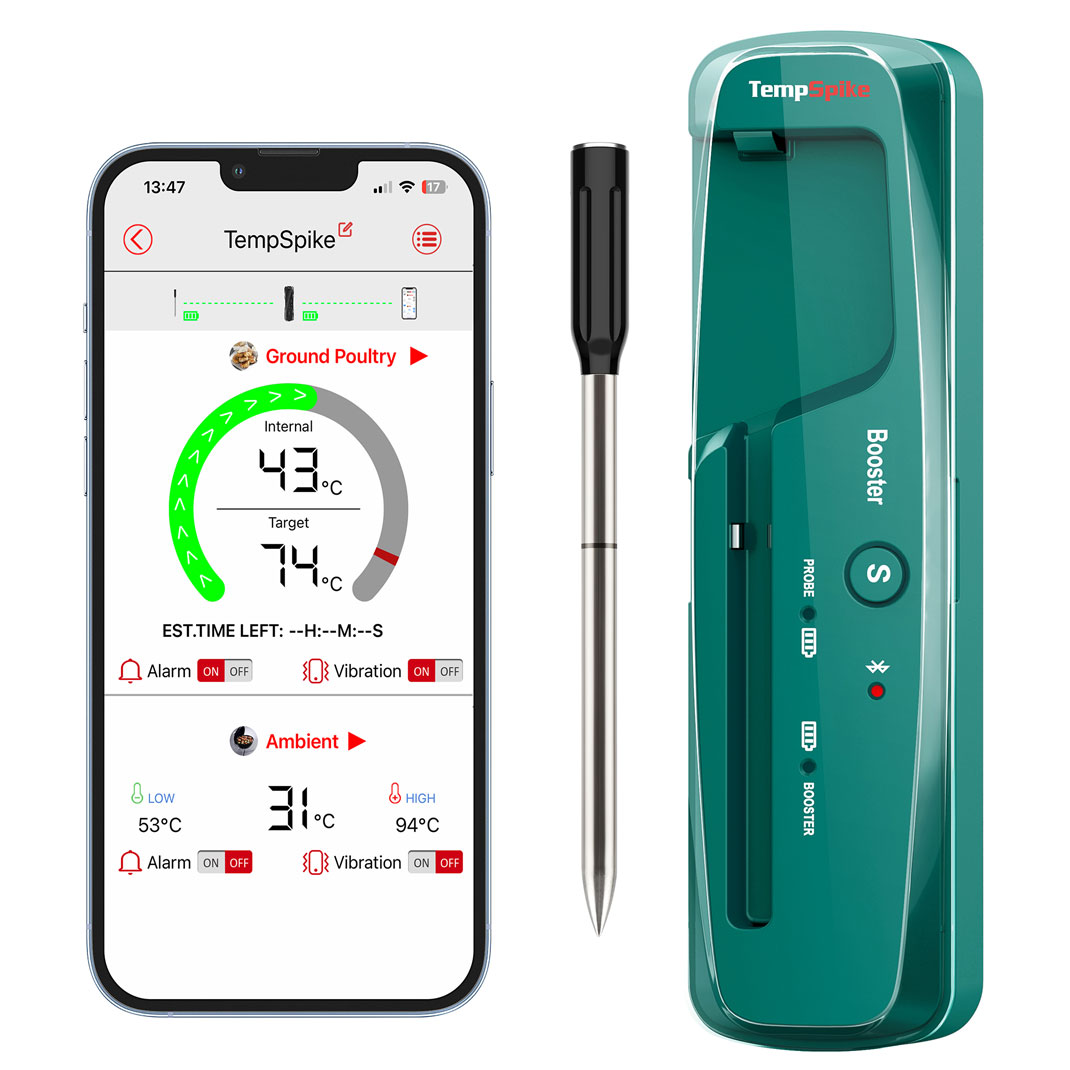How to Use Ear Thermometer Correctly






 288 Comments
288 Comments
Although mercury thermometers are the old reliable standbys to determine whether you or your child has a fever, many digital devices like the mercury-free oral thermometers, mercury-free rectal thermometers, and even ear thermometers have hit the market. The new types feature digital displays that make reading them a whole lot easier. But do you really know how to use ear thermometer correctly? A digital-display ear thermometer is one of the most non-invasive methods to easily check an uncooperative child’s temperature without any discomfort or guesswork. Nevertheless, a digital ear thermometer has a correct method to obtain the most accurate readings.
5 Must-Knows Before Taking Temperature in Your Ear
1. What Should the Temperature Be in Your Ear?
Medical experts agree that accurate temperature readings can be made by probing the armpit, anus, oral cavity, forehead, and ear. However, the benchmarks of what temperature is normal in each specific region require some discussion because there is quite a bit of variance. Reference to the ear thermometer fever chart below.
Ear Thermometer Fever Chart (comparison):
- A normal oral temperature is 98.6°F (37°C)
- A normal forehead temperature is 98.1°F (36.7°C) to 97.6°F (36.4°C)
- A normal armpit temperature is also 98.1°F (36.7°C) to 97.6°F (36.4°C)
- A normal anal temperature is 99.1°F (37.3°C) to 98.6°F (37°C)
- A normal ear temperature is also 99.1°F (37.3°C) to 98.6°F (37°C)
2. What is considered a fever with ear thermometer?
When a child has a temperature reading using an anal or ear thermometer of 100.4°F (38°C) or higher, this is evidence of a possible fever. Anal thermometer is thought to be the most accurate method for children under 2 years of age. Experts suggest taking about 3 readings with an ear thermometer to ensure accuracy.
3. Do you add a degree to ear thermometer?
No, you do not have to add a degree to the ear thermometer. The doctors have a chart like the one above to determine whether the temperature is high for the type of thermometer used. Although many try to simplify the process by asking their doctors, “Do you add a degree to ear thermometer?”, this would only be helpful as a general rule of thumb in detecting severe fevers. However, in the long run, it becomes more confusing than it is useful.
4. When should you not use an ear thermometer?
Even the best ear thermometers such as the ThermoPro Digital Medical Infrared Thermometer can give misreadings if the patient has a buildup of wax in their ears. In order to obtain accurate readings, the patient must first have a doctor remove the wax using a Waterpik device or drops of wax softener to flush it out. You should never attempt to remove the wax yourself because the surface of the ear is as delicate as the retina of the eye. Even micro-scratches can cause swelling and pain. Inserting objects in the ear can cause hearing damage and injury. You should also avoid contact with the ear if the patient has ear pain, infection, or had surgery recently.
5. Can you put an ear thermometer in your mouth?
You should never try to take the temperature of your oral cavity by inserting an ear thermometer into your mouth. Taking the temperature in ear should only be done if the patient’s ears are healthy enough to accept it. Otherwise, you should use an oral thermometer to check the oral temperature. The ear thermometer reading would not be accurate if you used it in the oral cavity because it is calibrated for ear temperatures.
12 Steps to Help You Use Ear Thermometer Correctly
Step 1 – Check Ears
In order to get a clean ear thermometer reading, you are going to need to ensure that the patient or child’s ears are clean. Any kind of waxy buildup in the ear canal will interfere with inhibit the ThermoPro Ear Thermometer from obtaining an accurate reading. You must also ensure that the patient has been relatively inactive for at least 15 minutes.
Step 2 – Clean Ears
You can use products that gently soften ear wax and the soft rubber bulb to flush out any excess wax. However, you must be careful not to use Q-tips or other abrasive tissues to probe into the ear. These materials will leave micro-scratches that can become infected easily and cause the ear to swell. Never use the probe if the ear canal is swollen, infected, or the patient complains of pain.

Step 3 – Sanitize the Tip
You can purchase isopropyl alcohol packets that are used to sterilize skin before injections to clean the tip of the digital thermometer. You can also use these wipes or a cotton ball dipped in rubbing alcohol (isopropyl) to remove any waxy residue on the outer surface of the ear. Some ear thermometers have disposable sterile tips to reduce the chance of spreading infections. If so, place a new sterile tip over the thermometer probe.
Step 4 – Adjust Ear Position
In order to get an accurate reading, the probe must be inserted deep enough to create a seal. This allows the thermometer to bounce an infrared signal off the inner ear drum to determine the temperature. The probe does not have to touch the eardrum. However, the ear canal should be as straight as possible. In order to straighten the ear canal, you should pull straight back gently on a child’s ear or up and back if the patient is an adult. This will help to ease the probe in without discomfort and will ensure the most accurate reading.
Step 5 – Take a Temperature Reading
Once the thermometer is sealed in the canal, you can initiate the temperature reading process. Most thermometers require you to hold the probe in place until it beeps or a light flashes. Always be sure to store any temperatures in the digital unit. If the thermometer doesn’t have a memory feature, write down the temperatures to keep a consistent log over the course of the illness. The benefits of a digital ear thermometer are speed and accuracy.
Step 6 – Consider Temperature Variations
In order to gauge the current temperatures with accuracy, it is useful to establish a baseline temperature range for your child or patient. Because normal body temperatures can vary between sexes, ages, and even different timeframes, it is important to consider all the factors if a low-level fever is in question. Menstruation, activity level, time of day, and even consuming a meal can have a subtle effect on temperature readings.
Step 7 – Assess the Health of the Patient
You cannot rely on the readings of body temperature alone to determine whether a patient is suffering from a low-grade fever. Furthermore, it is important to use many different types of thermometers to confirm a high reading. Never rely on a single ear thermometer reading alone to make a diagnosis. Taking the temperature in the ear is a fast and easy method but not the only method. Take multiple readings and determine whether your patient has classic fever symptoms such as loss of appetite, sweating while inactive at room temperature, body aches, weakness, headaches, and increased thirst. Children may feel normal even if their temperatures are 100.4 °F (38 °C) and may be sick with a normal temperature.
Step 8 – Know When to Consult a Doctor
A fever is your body’s way of fighting off a viral or bacterial infection by raising the temperatures to kill the foreign pathogens. A fever is technically anything 100.4 °F (38 °C) or higher. If your child is over 1 year old and seems to be playing and sleeping as usual, this type of fever should be rechecked regularly but is no reason for alarm. The need for medical intervention occurs when fevers reach 102 °F (38.9 °C) or higher and are accompanied by symptoms such as coughing, diarrhea, irritability, lethargy, and restless discomfort.

It is only when a fever reaches 103 °F (39.4 °C) or higher that an emergency room visit is in order. At these temperatures, the patient may convulse or hallucinate and become severely irritated and confused. Acetaminophen (Tylenol) is the typical treatment for reducing fever. Aspirin should never be given to any child under 18 years of age because they risk the development of Reye’s syndrome during a fever. Ibuprofen cannot be given to children under 6 months for the same reason.
Step 9 – Monitor the Patient
In order to ensure that the fever does not return or elevate, you must continue to monitor the health of the patient. If they begin taking Tylenol, ensure that none of the other medications that they take contain acetaminophen. Too much acetaminophen is toxic and can cause liver damage or death.
Step 10 – Electrolyte Drinks
There are drinks on the market such as Pedialyte that restore the natural balance of electrolytes in the body of a child. If a child is drinking a lot of fluids but is not eating, this can help to restore their body chemistry and speed up the recovery.
Step 11 – Sanitize the Thermometer
Before you return your thermometer to its packaging, you should resanitize it by wiping the tip and any contact points with an isopropyl wipe or cotton ball dipped in rubbing alcohol. Let it air dry because rubbing alcohol often contains a percentage of water that can harbor germs and help them grow if you let the instrument incubate germs.
Step 12 – Store in a Safe Place
If your digital thermometer has batteries, it may be best to remove them before putting the device back into storage. Certain kinds of batteries can leak and cause damage to the device and its terminals. The battery life will also be diminished if the batteries are not removed. However, some medical devices have specially made batteries that can be kept in the device and are not easily removable. Always read the instructions of your device thoroughly to determine whether the batteries should be removed or not.
Conclusion
A digital infrared ear thermometer is useful in keeping track of a fever. It is fast and accurate if you know how to check patients and the temperature variations. Knowing how to assess the health of the patient and when to seek medical care are also critical to the health of the patient. Many parents have accidentally given the wrong medications to their children or overlooked the severity of a fever because they did not have the proper guidance or tools to check. Please share this guide and help others to access information when they need it most.























